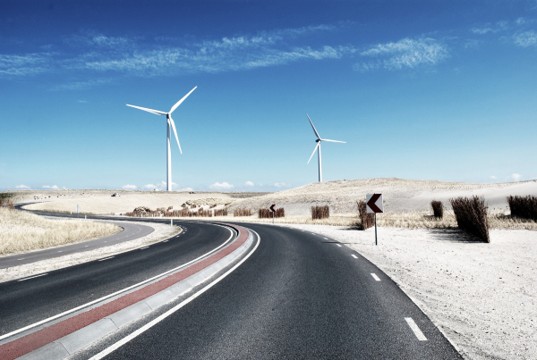Summary of Research work Renewable Energy
The Dawn of a Renewable Energy Era: Trends, Innovations, and Opportunities
1. Introduction: A Sustainable Energy Future
· The urgency of transitioning to renewable energy due to climate change, environmental degradation, and resource depletion.
· Definitions and key components: solar, wind, geothermal, hydropower, and biomass energy systems.
· Historical perspective: Early challenges, the impact of the 1970s oil crisis, and recent advancements in making renewables cost-effective and scalable.
2. Technological Advancements in Renewable Energy
Solar Photovoltaic Technology:
Rise of perovskite and bifacial solar cells.
Tandem solar cells for maximizing efficiency.
Real-world examples: Solar installations achieving grid parity.
Wind Energy Progress:
Advancements in turbine designs, including offshore floating turbines.
Role of predictive maintenance and sensors in improving efficiency.
Geothermal Innovations:
Enhanced Geothermal Systems (EGS) for heat extraction in new regions.
Binary cycle plants and geothermal heat pumps for commercial use.
Biofuel Breakthroughs:
Transition to second-generation biofuels like algae and cellulosic ethanol.
Waste-to-energy solutions for sustainability.
3. Key Trends Shaping the Future
Energy Storage Solutions: Next-gen batteries and supercapacitors.
Smart Energy Systems: AI and machine learning in optimizing resource use.
Global Investments and Policies: The role of international agreements like the Paris Accord in shaping renewable energy markets.
4. Conclusion: A Glimpse into a Greener Tomorrow
Summary of current advancements and opportunities for global adoption.
Call to action for increased R&D and public-private collaboration.
Overcoming Barriers to Renewable Energy: Challenges and Solutions
1. Introduction: The Roadblocks to Progress
Overview of the challenges hindering widespread adoption of renewable energy systems.
Emphasis on the necessity of addressing these barriers for a low-carbon future.
2. Technical Challenges
Energy Storage Issues:
Intermittency in solar and wind energy generation.
Constraints of current battery technologies (lithium-ion limitations).
Emerging alternatives: Solid-state batteries, flow batteries, and nanomaterials.
Grid Integration:
Transitioning from centralized to decentralized power generation.
Solutions: Smart grid technologies, demand-response mechanisms, and flexible infrastructure.
Infrastructure Constraints:
High costs of upgrading transmission systems for renewable integration.
Case studies of successful grid modernization projects.
3. Environmental and Resource Concerns
Sustainability of Materials:
The impact of rare-earth metal mining on ecosystems and human rights.
Recycling challenges for wind turbines and solar panels.
Innovations: Biodegradable composites and reusable materials.
Land Use Conflicts:
Competition between energy installations and agriculture or natural habitats.
Solutions: Vertical solar farms and offshore wind technologies.
4. Economic Viability
High upfront investment requirements for renewables.
Financial strategies: Public-private partnerships, subsidies, and innovative financing.
The long-term cost advantages of renewables compared to fossil fuels.
5. Policy and Collaboration Gaps
Need for cohesive policy frameworks and international cooperation.
Examples of effective policies, such as Renewable Portfolio Standards and feed-in tariffs.
6. Conclusion: Bridging the Gap
Reflection on the solutions needed to overcome these challenges.
Vision for an equitable and sustainable energy transition.
Renewable Energy as a Catalyst for Environmental and Economic Transformation
1. Introduction: The Case for Renewable Energy
The dual benefits of renewable energy systems: environmental preservation and economic growth.
Framing renewables as a cornerstone of the 21st-century global economy.
2. Environmental Advantages
Greenhouse Gas Emission Reductions:
Quantitative comparisons of emissions from coal vs. renewables.
Potential impact on global carbon reduction goals.
Reduction in Pollution:
Air quality improvements from reduced sulfur dioxide and nitrogen oxides.
Water conservation benefits in solar and wind systems.
Conservation of Resources:
The inexhaustible nature of sunlight, wind, and geothermal heat.
Mitigating resource depletion through sustainable production methods.
3. Economic Contributions
Job Creation:
Analysis of labor-intensive aspects of renewable energy sectors.
Regional case studies showing job growth through renewable investments.
Energy Cost Savings:
Trends in decreasing costs of solar and wind power.
Long-term economic benefits for consumers and industries.
Energy Security:
Diversification of energy sources to reduce reliance on volatile imports.
Examples of energy independence achieved through local renewables.
4. Actionable Strategies for Scaling Renewables
Policy Recommendations:
Incentives, standards, and net metering policies to boost adoption.
R&D Investments:
Focus areas like advanced energy storage and recycling technologies.
Infrastructure Development:
Building resilient grids for decentralized energy systems.
Community Engagement:
Strategies for involving stakeholders and promoting local ownership of projects.
5. The Path Forward: Collaborative Efforts
Roles of governments, industries, and researchers in driving innovation.
The importance of public awareness and education in supporting the energy transition.
6. Conclusion: A Blueprint for Global Sustainability
A call to action for embracing renewable energy as a pathway to a sustainable future.
Final thoughts on balancing trade-offs to maximize societal benefits.
